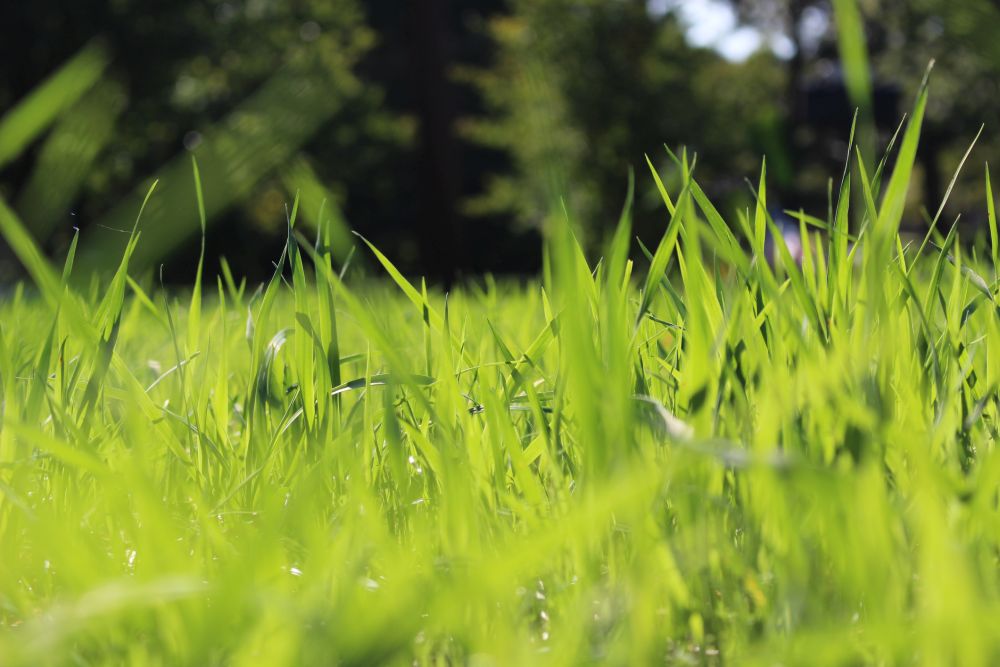Tall Fescue Grass – How To Grow And Care For Tall Fescue In The Lawn
They say the perfect lawn doesn’t exist. But the tall fescue grass might convince you otherwise. A hardy turfgrass, the tall fescue grass handles different types of soil, weather conditions, shade, and even drought. This is the perfect type of grass for your lawn if you tend to forget to water the grass, or don’t have much time for maintenance and lawn care.
Put simply, your lawn becomes so much more resilient, lush green, and durable when you carpet it with the tall fescue. As a cool-season grass, it has a high tolerance to direct sunlight and heat. So if you live in the right zone, this tall fescue should be at the top of your list of turfgrass to grow. This article covers everything you need to know about this fine grass, how to sow it, and what kind of care and maintenance it requires.
Tall Fescue Grass at a Glance
One of the earliest turfgrass types to make its way to the United States, tall fescue grass (Festuca arundinacea) first made its way its appearance in a few lawns in the 19th century. This was around the time lawns became the fashionable thing to do for middle and upper-class America.
However, it will take this grass another century to move from pasture grass to lawns when the hybrid Kentucky 31 was developed. Since then, many more varieties have been developed and now tall fescue grass is the dominant turfgrass in the northern parts of the country.
As a cool-season grass, it grows mainly during the spring and fall of each year. In the summer and winter, the grass goes dormant. It has a high germination rate from seeds and grows much faster than other popular turfgrass such as Kentucky Blue. Its root system is one of the most robust among all the lawn grass varieties. The roots reach about 3 feet deep which explains the grass’s high tolerance to drought and heat. Once the tall fescue establishes, it will need less water from you as its far-reaching roots search for moisture in the deep layers of the soil.
The mature grass is distinguished with smaller rhizomes and limited spread than other turfgrass in that family. Since it multiplies through vertical shoots or tillers, it makes it easy for you to groom it and keep its growth under check.
Tall Fescue Grass Varieties
As it transitioned from being chewing grass grown mainly in pastures to a finer option for lawns, more varieties of tall fescue grass were developed. Many of these cultivars are a far cry from Kentucky 31 as they have finer blades and greener colors. Here are some of the common cultivars of tall fescue grass you can grow on your lawn.
- Defiance XRE: a cross-breed of two grass varieties that spread by rhizomes, this cultivar is eco-friendly, dense, and finely knitted. It requires less fertilizer than other varieties and thanks to its fast growth rates and abundance of rhizomes, it has a much faster recovery rate. It maintains its uniform dark green look throughout the year and resists brown spots.
- Titan Plus: Another cultivar developed as a hybrid from different tall fescue varieties. The result is a hardy and durable turfgrass that needs less maintenance work than usual. The leaves have fine blades and are dark green during the spring, summer, and fall. This cultivar has better disease resistance and you won’t have problems with weeds, and yellow spots, and requires less spring maintenance.
- Defiance XRE Blue: A cross-breed between tall fescue and Bluegrass. As a result, you have a cultivar with dark green leaves, better resistance to wear, and finer rhizome formation. The grass has a dwarfish growth which means less mowing and cutting for you. It resists common turfgrass diseases such as leaf spot and net blotch.
Depending on your zone and lawn size, I’d recommend the Defiance XRE Blue as the ideal turfgrass for your lawn. It doesn’t grow as tall as other cultivars, has a high resistance to diseases and its injury recovery is admirable.
How to Grow Tall Fescue Grass
The best way to start tall fescue as is the case with all types of turfgrass is through seeds. Naturally, growing grass from seeds is different from planting a perennial flowering plant or even a tree. For one thing, you’ll be using an obscene amount of seeds that need to be spread evenly across a larger area than is usual. The timing and soil preparation are all important factors for the germination of the seeds. Here’s how to grow tall fescue grass from seeds in easy steps.
- Select the right type of tall fescue seeds for your lawn. If parts of the lawn are in perpetual shade, then pick a variety with shade tolerance. So invest in good quality seeds from a reliable source.
- The best time to sow the seeds is in the late summer or early fall. This coincides with the tall fescue’s optimal growth times.
- Ensure the soil’s temperature is in the low 60s Fahrenheit. This is the ideal temperature for seed germination. Don’t sow the seeds in mid-summer when the soil is too hot or early spring when it’s still too cold.
- Check the soil and adjust your pH levels to be between 5.5 and 7.5.
- Remove any weed, debris, and other invasive plants from the lawn.
- Level the surface of the lawn, filling up any low areas to prevent water pooling into these areas and impacting the growth of the grass.
- Work in organic compost and mix it in the top 6 to 8 inches of the soil.
- Use either a drop spreader for lawns less than 5000 square feet or a rotary spreader for lawns larger than that.
- After you spread the seeds, rake them into the soil. Make sure the seeds are covered by a thin layer of soil. This protects the seeds from too much sun exposure and speeds up their germination.
- Before you water the lawn, use a lawn roller to roll the whole area. This improves the seeds’ contact with the soil.
- Water the lawn and keep the soil moist until the seeds germinate.
Tall Fescue Grass Care
One thing to be said about the tall fescue grass is that it requires less care and maintenance the more it grows and establishes. Thanks to its long and far-reaching roots, it displays wonderful resistance to drought. Even if the topsoil isn’t as nutritious or rich as the turfgrass likes it, its roots are always in search of nutrients deeper and deeper as they grow. This all translates into less time spent watering and feeding the grass in your lawn.
Sunlight
Unlike other turfgrass varieties, tall fescue is famous for its high tolerance to partial shade. It thrives in the full sun but it will also show fewer signs of distress if the sunlight is limited. This admirable quality makes it ideal for zones 3 to 8. You’ll notice the grass still looks dark green and maintains the same growth rate in the shade of a building or a tree as it does under the full sun.
Soil
Another care aspect that would normally give you a headache with many types of turfgrass but not the tall fescue. This hardy grass isn’t fazed by the type of soil it grows in. Even poor soil with little nutrients will not come in the way of this resourceful grass. Its roots spread out and deep into the soil pursuing moisture and nutrients. However, for best results and to ensure better seed germination, you should make sure the pH levels are between 5.5 and 7.5 and that the soil is sandy or loamy. This gives the roots incentive to grow and penetrate the soil with less resistance.
Water
Although the root systems of the tall fescue grass are the first to develop and reach maturity, the grass still needs frequent watering. On average you should give it between one to two inches of water every week. This amount should grow less as the temperature drops in the fall and winter. You can use a sprinkler to make it easier to water the grass on time and in the right amounts. You should always aim for getting the top 6 inches of the soil moist but not wet. This grass is drought-tolerant but it can’t survive in wet soil. If you have low areas in your lawn, fill them up with soil and reseed the spots to create a uniform look and feel across the lawn.
Fertilizer
A common misconception among homeowners is that the tall fescue grass doesn’t require fertilizing because it gets most of the nutrients from the deep soil. The grass in your lawn still needs the right amount of fertilizer annually just like every other plant. So give your turfgrass about 3 pounds of fertilizer for every one thousand square feet of lawn each year. The fertilizer should have the formula 20-6-6 and should be nitrogen-rich to improve the growth and look of the grass rhizomes. You should divide that amount and apply one half in the early spring before the first growth cycle of the grass. The other application should be in the late summer or early fall.
Pests and Diseases
In the summer when the sun reaches its hottest, you might notice brown spots in the grass. These are called the brown batch disease and are common among dwarf tall fescue grass varieties. Unfortunately, there’s no treatment for this disease and the only way to prevent its spread is to remove the grass from the affected areas and reseed them.
As for pests, most tall fescue grass varieties and cultivars are immune to the common pests that attack other grass species. That’s one less area where you have to worry about. However, just to be on the safe side, it’s recommended that you pick a cultivar that is resistant to diseases and pests. That way you will enjoy your dark green grass growing on your lawn with fewer problems that require your attention.

